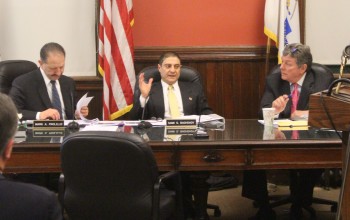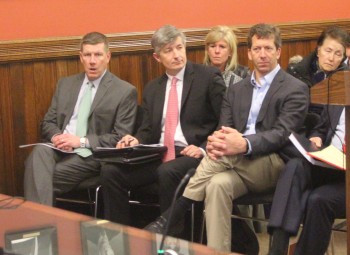Photo: Belmont Town Hall.
To the editor:
Good day, Belmont.
It is another town election cycle and this time, I am hearing some strange things that people believe is truth. Because I am on the campaign for Alexandra Ruban, I hope to share some of who I have learned Alexandra is.
Alexandra is a wife, mother and consultant who moved to Belmont for its great schools and active community. When she attended Town Day in 2013, she, like others, heard that part of the due diligence was that the town was seeking Request for Proposals from other trash and recycling vendors, having had the same vendor for 15 years without assessing the market. Three years later, we have not requested any bids, just bids like you would get if you were seeking a roofer, painter, driveway paver – and we have locked ourselves into another two-year contract with a 12 percent increase.
The reason I joined Alexandra in her bid for Selectman is because I, too, have been frustrated with policy and decision making in town: from global insights being used as a way to stall the adoption of solar energy, to really talented, committed experts in their fields being passed over for those who have successfully implemented moratoriums without any further policies and guidelines to help us when the moratorium lifts. There is unbelievable work happening in our town committees that takes herculean efforts (to gather data needed to be informed and make recommendations, years of complaints by few overshadowing the solutions presented that could accommodate all involved).
I gladly serve on the Economic Development Advisory Council under Tomi Olson, who has been a champion of mine as we bring forth proposals to help our home and business owners with real economic relief. Without a forward-thinking ally like Tomi, whether Alexandra has her vote or not, new, common-sense ideas would not be possible to consider at the Selectmen level. I, like Alexandra, am a business owner and present to and represent the highest level of senior executives often, yet I am afraid of how our Board of Selectmen will react to our proposal because I have experienced public and private backlash a few times already. Is this the way you want it to be?
Common, inclusive solutions, from establishing frameworks to allow us to preserve the tangible and intangible assets in Belmont are needed. Policy-making has to begin and end with an inclusive agenda to help our home and business owners thrive. For those who argue about the smallest number of transient residents who bring their families for a short period and leave, how about we figure out how to woo them to stay instead of blaming them, incorrectly, I may add, for taxing our public services.
Finally, become informed. That is the purpose of our campaign. Whether you have decided on one candidate or the other, get informed on what each of them has and can accomplish. And determine whose values, vision, and ability to make progress while preserving our town of homes match yours.
Erin Lubien
Unity Avenue

